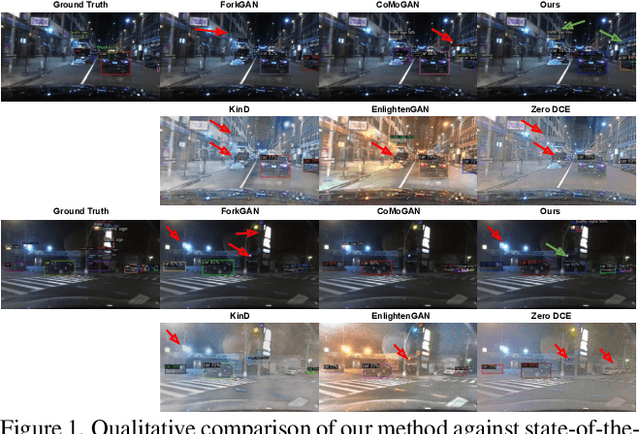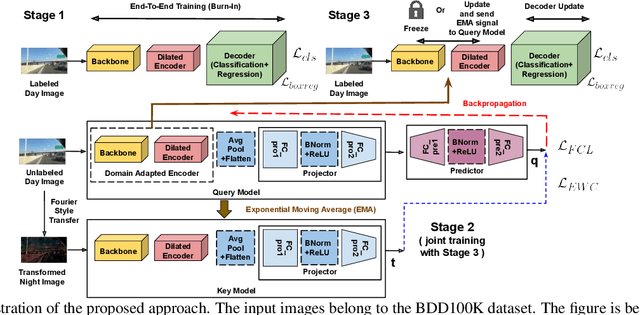Seeing BDD100K in dark: Single-Stage Night-time Object Detection via Continual Fourier Contrastive Learning
Paper and Code
Dec 06, 2021



Despite tremendous improvements in state-of-the-art object detectors, addressing object detection in the night-time has been studied only sparsely, that too, via non-uniform evaluation protocols among the limited available papers. In addition to the lack of methods to address this problem, there was also a lack of an adequately large benchmark dataset to study night-time object detection. Recently, the large scale BDD100K was introduced, which, in our opinion, should be chosen as the benchmark, to kickstart research in this area. Now, coming to the methods, existing approaches (limited in number), are mainly either generative image translation based, or image enhancement/ illumination based, neither of which is natural, conforming to how humans see objects in the night time (by focusing on object contours). In this paper, we bridge these 3 gaps: 1. Lack of an uniform evaluation protocol (using a single-stage detector, due to its efficacy, and efficiency), 2. Choice of dataset for benchmarking night-time object detection, and 3. A novel method to address the limitations of current alternatives. Our method leverages a Contrastive Learning based feature extractor, borrowing information from the frequency domain via Fourier transformation, and trained in a continual learning based fashion. The learned features when used for object detection (after fine-tuning the classification and regression layers), help achieve a new state-of-the-art empirical performance, comfortably outperforming an extensive number of competitors.
 Add to Chrome
Add to Chrome Add to Firefox
Add to Firefox Add to Edge
Add to Edge